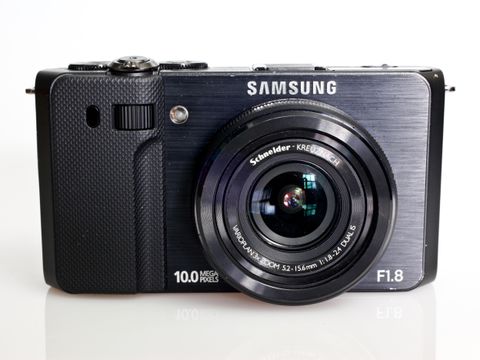Why you can trust TechRadar
We shoot a specially designed chart in carefully controlled conditions and the resulting images are analysed using DXO Analyzer software to generate the data to produce the graphs below.
A high signal to noise ratio (SNR) indicates a cleaner and better quality image.
For more more details on how to interpret our test data, check out our full explanation of our noise and dynamic range tests.
Signal to noise ratio
JPEG images
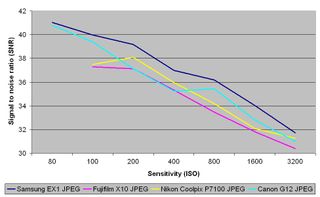
JPEG from the Samsung EX1 put in a better performance than the Fujifilm X10, Nikon Coolpix P7100 and the Canon PowerShot G12 across the entire sensitivity range for signal to noise ratio.
Raw images
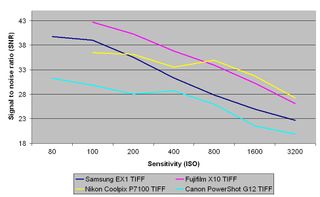
Raw images from the Samsung EX1 have a better signal to noise ratio than the Canon PowerShot 12, but results lag behind those of the Fujifilm X10 and Nikon Coolpix P7100.
Dynamic range
JPEG images
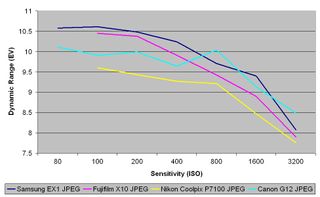
The Samsung EX1's JPEGs contain a wide tonal range at all sensitivities, beating all but the Canon PowerShot G12 at the higher end of the sensitivity range.
Raw images
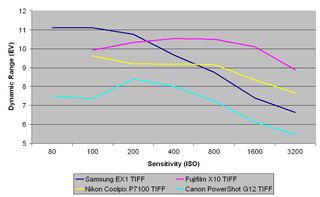
This chart indicates that the Samsung EX1's raw files have a greater dynamic range at the lower end of the sensitivity range than the comparison cameras, and whilst overtaken by the Fujifilm X10 at ISO 200 and the Nikon Coolpix P7100 at ISO 800 the EX1 still captures a good amount of tonal detail in the shadows and highlights.
